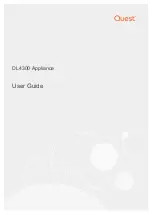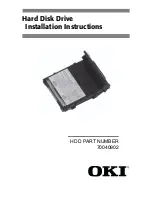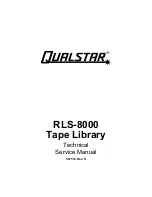
Understanding D-Series Array Management
The D-Series array is flexible enough to be implemented in a number of ways, from a single-server storage
solution up to a multi-server SAN infrastructure. No matter which approach is used, the array requires an
Ethernet connection to a server and client that will perform management functions and a Fibre Channel
connection to servers that will access the array’s storage.
Figure 2. Sample D-Series Infrastructure Design
Even though these roles can be implemented on a single server, this document describes these as distinct
server roles as follows:
•
Management Server
– The management server role is performed by a server with the Storage
Manager software installed. This server is attached to the array via an Ethernet connection.
•
Management Client
– The management client role is performed by any Windows workstation or server
that connects to the management server via the Web-based management interface.
•
Application Server
– The application server role is performed by any server that uses the array
storage via a Fibre Channel connection.
Requirements
The following equipment, tools, and resources are required to complete this installation.
•
Network Cables
– At least one Ethernet cable will be required to connect the array to an Ethernet
switch or hub that is used by the server designated to manage the array. However, it is highly
recommended to use two Ethernet cables for redundancy. If the management server will be connected
directly to the array, at least one crossover Ethernet cable will be required instead.
•
IP Addresses
– There is a management port on each controller. Each management port to be used will
require a unique IP address. Those IP addresses should be reserved and all associated network
settings should be confirmed before installation.
•
Tools
– You will need the installation CD (shipped with unit) and a #1 Phillips screwdriver.
•
Rack space
– If rack-mounting, 2U of rack space is required for each base unit and an additional 2U of
space is required for each additional disk enclosure.
•
Power Requirements
– Two available outlets providing AC 100-240V single phase 50/60Hz for a
NEMA 5-15P plug will be required for each base unit and each disk enclosure. Power and cooling
requirements are listed in the table below.
Maximum Wattage
BTUs per Hour
Model
SAS
SATA
SAS
SATA
D3 Base Unit
620 W
550 W
2,117
1,878
D4 Base Unit
640 W
590 W
2,185
2,015
Disk Enclosure
430 W
370 W
1,468
1,263
Table 1. Storage unit power requirements
NEC D3/D4 Quick Start Guide
2
LAN
Fibre Channel
Management Server
Management Clients
Application Servers
D-Series Array





































